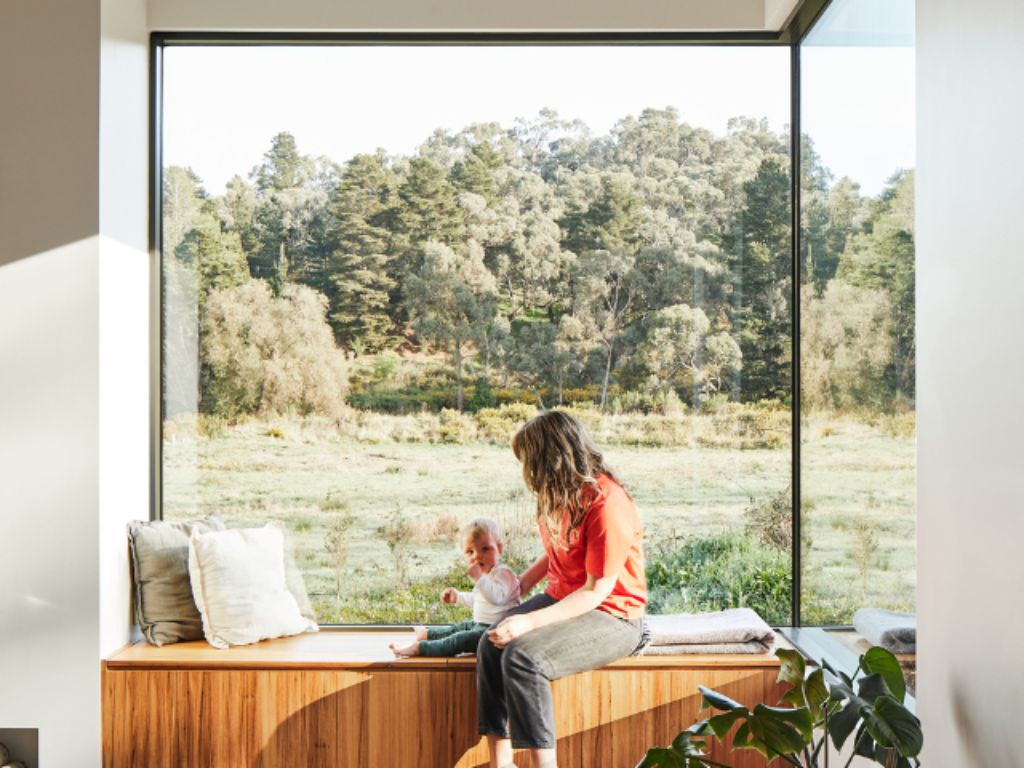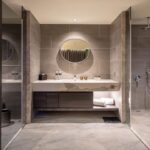Rylock Animation Series
We understand that window and door energy performance parameters, double glazing, low-e glass, and safety glass can be complex. That’s why Rylock created a series of animations to help you understand these concepts.

GALLERY
Safety Glass for Windows and Doors.
At Rylock, the safety of our customers and installation teams is always at our forefront. That’s why all our windows and doors are manufactured with Grade A Safety Glass as standard.
Designed to reduce the risk of injury, safety glass is essential in areas where human impact is more likely, such as doors, low-level glazing, bathrooms, and stairwells. Toughened glass breaks into blunt fragments, while laminated glass holds together on impact, helping to prevent harm during both daily use and installation.
Every Rylock product meets the relevant Australian Standards AS 1288 – Glass In Buildings, ensuring long-term protection, peace of mind, and compliance on site.
Learn more about the importance of safety glass in this animation.
Energy Performance Parameters for Windows & Doors.
Energy-efficient building design considers the specific climatic conditions of a given site. Climate and orientation are variables that can add comfort and value to your home.
Window and glass door product type and size are critical factors measuring the energy efficiency of a home, for products of a site’s energy rating or BASIX report. Appropriate glazing for winter heat gain, carefully positioned products to encourage crossflow ventilation and opening clerestory windows to vent warm summer air are but a few design examples.
Learn more about the considerations in this animation.
Double Glazing for Windows & Doors
An IGU (Insulated Glass Unit) is made up of two panes of glass that are separated via a perimeter spacer to minimise heat transfer between the inner and outer panes. All products at Rylock feature Grade A Safety Glass Low-e Double Glazing (Argon Fill) as a standard specification, for greater thermal performance.
Low-e double glazing is the most cost-effective way to minimise heat transfer through windows and glazed doors.
Learn more about the process of double glazing in this animation.
Low Emissivity (Low-E) Double Glazing for Windows & Doors.
Low-E Double Glazing is more effective than standard double glazing because it features an invisible coating that reflects heat while still allowing natural light to pass through. This improves insulation, reduces unwanted heat gain or loss, and boosts energy efficiency.
The term used to describe the performance attributes of glass is SHGC (Solar Heat Gain Coefficient), which is the fraction of solar radiation transferred through a product. Rylock offers a full range of Low-E glass options from their standard specification, Comfort Solution, to Ultra High Performance Solar Solution, tailored to suit your project’s climate, solar orientation, and site requirements.
Learn more about low-e glass in this animation.
A striking red staircase has become the symbolic thread connecting two NAB workplaces located 24 kilometres apart, with ...
A new boutique for Les Chocolats de Chloé has brought a burst of colour and childhood wonder to ...
Domed timber roofs, stone cladding and an emphasis on natural materials define Suyian Lodge, a new safari resort ...
Morris Property Group has lodged an application to consolidate three neighbouring commercial sites in the heart of Canberra, ...
The guest bathrooms at Park Lees Hotel in Kaohsiung are defined by a warm, natural aesthetic thanks to ...









